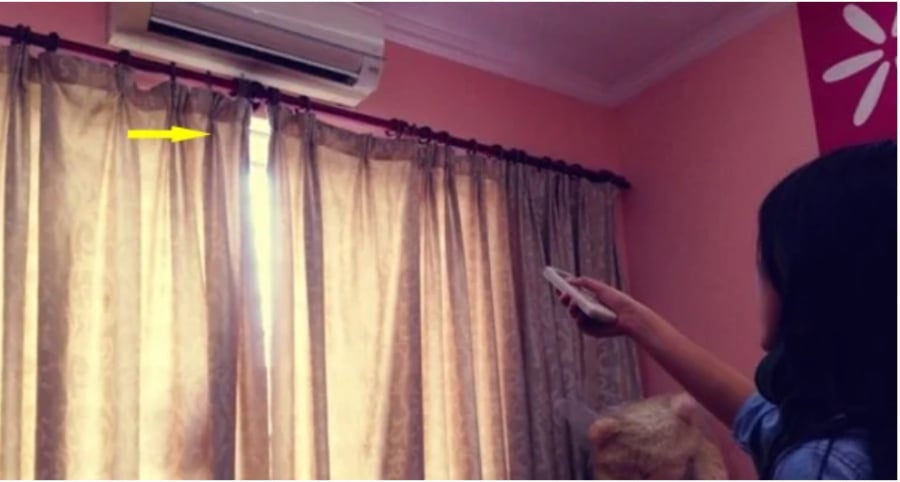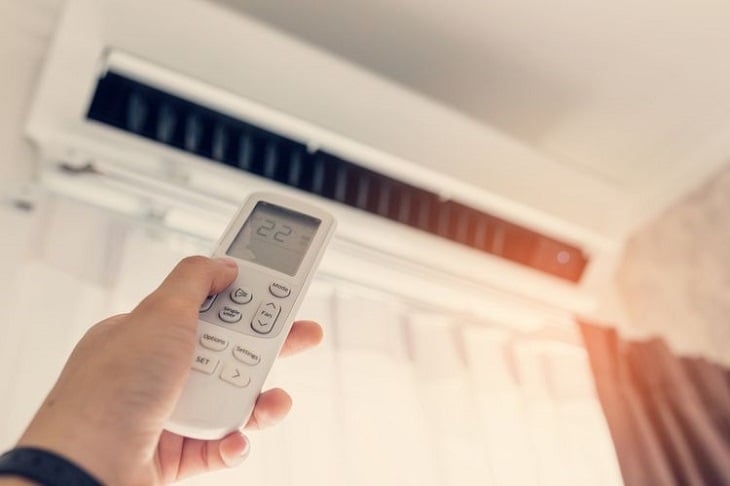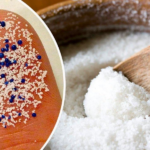As outdoor temperatures soar to 35–40°C, it’s common for people to seal their windows and doors shut when turning on the air conditioning to retain the cold air. However, many complain of dry throat, stuffiness, and even dizziness after prolonged exposure to air-conditioned rooms. So, what’s the sensible way to use air conditioning during the summer while conserving energy and maintaining health?
Sealing Windows and Doors: Energy Saving, But Avoid Overdoing It
According to refrigeration experts, air conditioners work most efficiently when the space is well-insulated and there is no intrusion of hot air from the outside. When the air conditioner is turned on with open windows or doors, hot air easily enters, causing the machine to work continuously to maintain the set temperature. This can increase energy consumption by up to 30% compared to normal.
A telling example is the case of Mrs. Hanh from Binh Thanh District, Ho Chi Minh City. Last April, her family’s electricity bill increased by more than 400,000 VND, even though they only used the air conditioner in the evenings. Upon inspection, the technician found that the bedroom window was often left ajar to let in “fresh air,” unintentionally causing cold air to escape and hot air to seep in.

Risks of Prolonged Stay in Enclosed Spaces
While sealing doors and windows helps keep the room cool, failing to ventilate periodically turns the air-conditioned room into a haven for pollutants. Research shows that if you stay in an enclosed space continuously for more than 3 hours without ventilation, the CO₂ levels can exceed safe limits, leading to fatigue, headaches, and even reduced concentration.
Take the case of Mr. Minh’s family in Hanoi as a cautionary tale. Spending an entire day in an air-conditioned room with sealed windows, his son experienced dizziness, while he and his wife felt shortness of breath and sore throat. The doctor attributed these symptoms to oxygen deprivation and the accumulation of harmful gases in the air.
Solution: Proper Air Conditioner Usage for a Balance of Efficiency and Health
To safely and effectively use air conditioning during the summer, follow these three simple steps:
1. Turn on the Air Conditioner but Keep the Doors Open for a While
Immediately after turning on the air conditioner, keep the windows open for about 5–10 minutes. This step is similar to flushing out old water before using new water in a kettle; it helps eliminate fine dust, mold, or residual gases in the evaporator after a long period of inactivity.
2. Seal Doors and Windows When the Room Reaches the Desired Temperature
After about 10–15 minutes, when the room has reached the desired temperature, close the doors and windows to prevent cold air from escaping and reduce the load on the air conditioner. For those sensitive to cold air, slightly opening a window or door (about 3–5 cm) can allow for gentle air circulation.
3. Ventilate Every 3 Hours
Indoor air needs to be “refreshed” to avoid a buildup of harmful gases. After every 3 hours of continuous air conditioner usage, open the windows for 5–10 minutes to exchange the air. If you’re worried about forgetting, set a timer on your phone as a reminder to care for your living space. For homes with exhaust fans or air purifiers with air exchange functions, utilize them to enhance air circulation.

Additional Notes: Regularly Clean and Maintain Humidity
Air conditioners tend to accumulate dust, bacteria, and pollutants on their filters over time, affecting air quality and cooling efficiency. Therefore, it’s essential to clean the unit every 3–6 months. Additionally, air conditioners can dry out the air, so use a humidifier or simply place a small bowl of water in the room to maintain humidity, especially for the elderly and young children.
Using air conditioning wisely not only saves costs but also safeguards your family’s health. Avoid completely sealing or widely opening doors and windows when the air conditioner is on—striking a balance between cooling and air circulation is the optimal solution for sweltering summers.
The Ultimate Spice Blend: Unveiling the Secret to Vietnam’s Culinary Magic
Introducing the two essential spices, packed with microplastic particles, that are indispensable in any Vietnamese kitchen. These spices are beloved by locals for their unique ability to elevate any dish with their distinct flavors. With just a sprinkle, they can transform mundane meals into culinary masterpieces. But are we really aware of the hidden dangers lurking in these seemingly innocent spices? It’s time to uncover the truth and make informed choices for a healthier future.






































